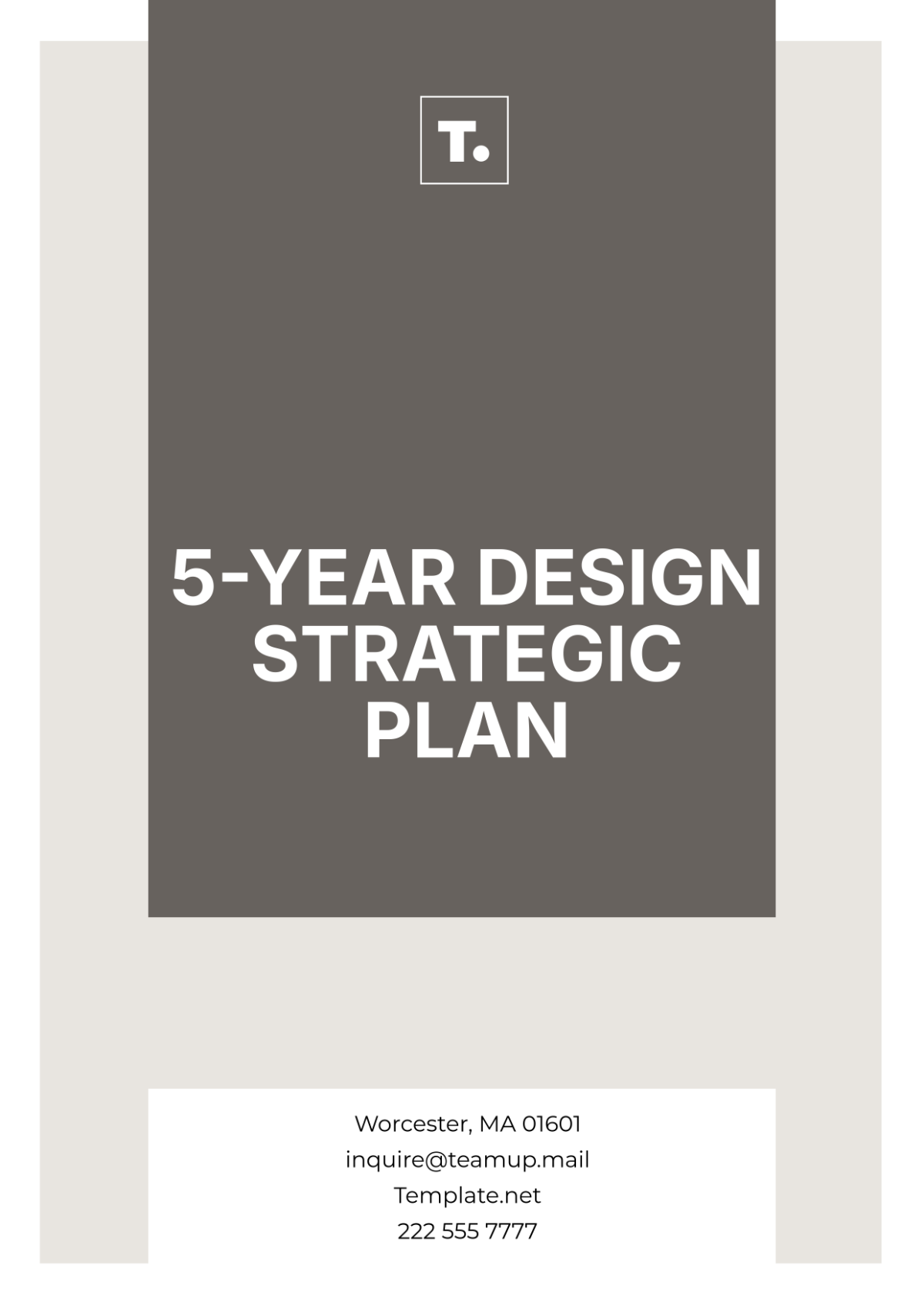Free 5-Year Design Strategic Plan

Company Name: [Your Company Name]
Prepared by: [Your Name]
Date: [Insert Date]
I. Executive Summary
Overview: Provide a concise summary of the strategic plan, including the purpose and the primary focus areas for the next five years.
Key Objectives: Outline the main objectives that the organization aims to achieve.
Expected Outcomes: Highlight the anticipated impact of the strategic initiatives on the organization.
II. Vision Statement
Definition: Articulate the long-term vision of the organization.
Guiding Questions: What do we aspire to become in the next five years? How do we want to be perceived by our stakeholders?
III. Mission Statement
Purpose: Describe the organization’s fundamental purpose and primary objectives.
Guiding Questions: What is our core function? Who do we serve, and what value do we provide?
IV. Core Values
List of Values: Enumerate the guiding principles that will shape the culture and decision-making of the organization.
Guiding Questions: What beliefs and behaviors are central to our organization? How do these values influence our operations and interactions?
V. Situation Analysis
A. SWOT Analysis
Strengths: Identify internal attributes that give the organization an advantage.
Weaknesses: Acknowledge internal limitations that may hinder progress.
Opportunities: Explore external factors that could benefit the organization.
Threats: Assess external challenges that could negatively impact the organization.
B. Market Analysis
Industry Overview: Summarize the current state of the industry.
Key Trends: Identify major trends affecting the market and organization.
Competitive Landscape: Analyze key competitors and their market positioning.
VI. Strategic Goals
Goal 1:
Description: Clearly define the goal.
Metrics for Success: Identify measurable outcomes to assess progress.
Timeline: Specify the timeframe for achieving this goal.
Goal 2:
Description: Clearly define the goal.
Metrics for Success: Identify measurable outcomes to assess progress.
Timeline: Specify the timeframe for achieving this goal.
Goal 3:
Description: Clearly define the goal.
Metrics for Success: Identify measurable outcomes to assess progress.
Timeline: Specify the timeframe for achieving this goal.
(Add additional goals as necessary)
VII. Action Plans
Goal 1 Action Steps:
Action Step 1: Detail the specific task, responsible party, and deadline.
Action Step 2: Detail the specific task, responsible party, and deadline.
Goal 2 Action Steps:
Action Step 1: Detail the specific task, responsible party, and deadline.
Action Step 2: Detail the specific task, responsible party, and deadline.
Goal 3 Action Steps:
Action Step 1: Detail the specific task, responsible party, and deadline.
Action Step 2: Detail the specific task, responsible party, and deadline.
(Add additional action steps as necessary)
VIII. Financial Projections
Overview: Provide an overview of the anticipated income, expenses, and funding requirements for each year of the plan.
Guiding Questions: What resources will be needed to implement our strategies? How will we measure financial success?
IX. Evaluation and Monitoring
Tracking Progress: Describe the metrics and methods that will be used to evaluate progress towards goals.
Reporting Schedule: Outline how often progress will be reviewed and reported.
Guiding Questions: How will we ensure accountability? What adjustments will we make if we are not on track?
X. Appendices
Additional Resources: Include any supporting documents, charts, graphs, or resources relevant to the strategic plan.
Guiding Questions: What additional information will help stakeholders understand and engage with the plan?
- 100% Customizable, free editor
- Access 1 Million+ Templates, photo’s & graphics
- Download or share as a template
- Click and replace photos, graphics, text, backgrounds
- Resize, crop, AI write & more
- Access advanced editor
Plan for the future with our 5-Year Design Strategic Plan Template available on Template.net. This customizable, editable template is perfect for businesses or organizations aiming for long-term growth. Easily editable in our AI Editor Tool, it lets you define goals, strategies, and milestones over five years. The template provides a clear path for sustainable development, with space to track progress, adapt to changes, and measure success.





























